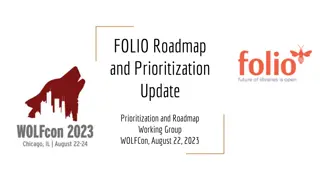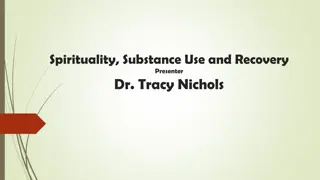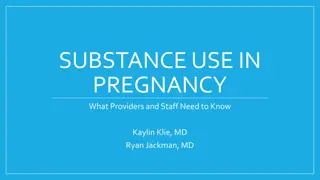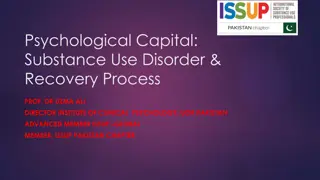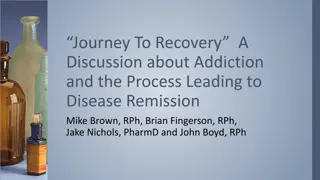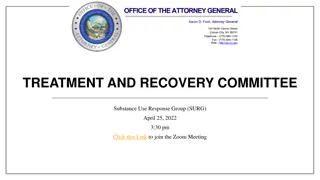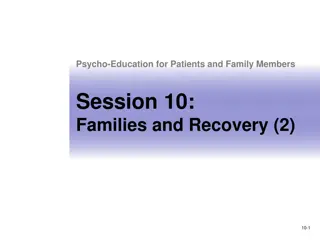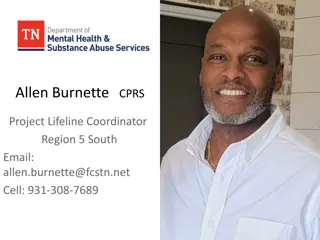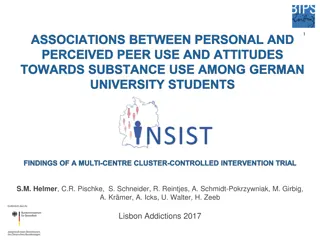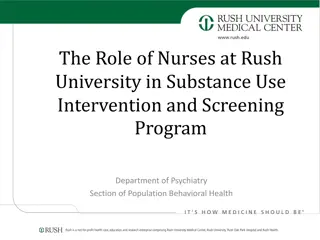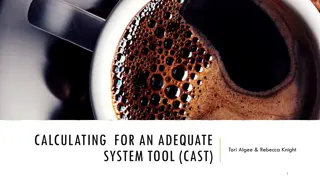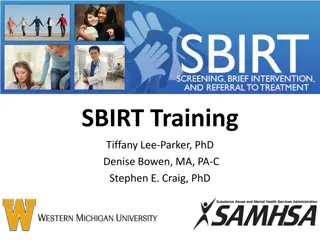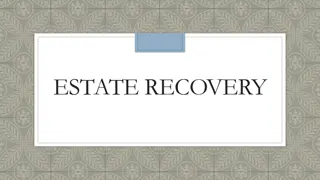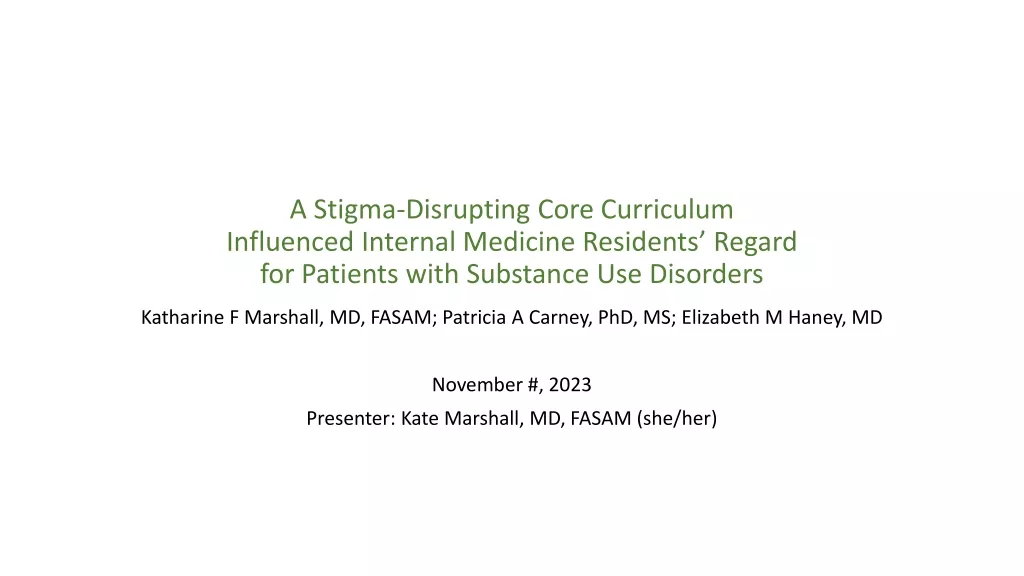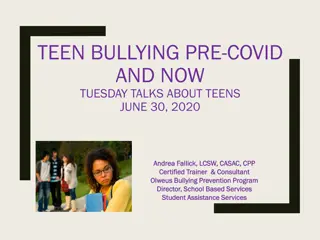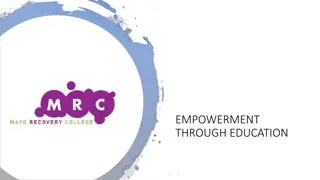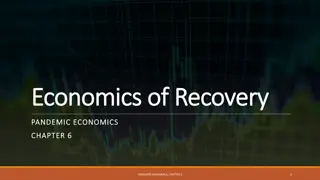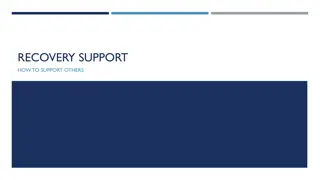Understanding the Roadmap to Recovery from Substance Use
This session provides insights into the stages of recovery from substance use, including withdrawal, early abstinence, protracted abstinence, and adjustment. It highlights the physical and emotional characteristics of each stage, along with relapse risk factors. The content offers guidance on navigating feelings, physical changes, and challenges during the recovery journey.
Download Presentation

Please find below an Image/Link to download the presentation.
The content on the website is provided AS IS for your information and personal use only. It may not be sold, licensed, or shared on other websites without obtaining consent from the author. Download presentation by click this link. If you encounter any issues during the download, it is possible that the publisher has removed the file from their server.
E N D
Presentation Transcript
Psycho-Education for Patients and Family Members Session 7: Roadmap for Recovery (1) 7-1
Recovery Stages Stage 1: Withdrawal (1-2 weeks) Stage 2: Early Abstinence or Honeymoon (following 1 month) Stage 3: Protracted Abstinence or the Wall (following 3-4 months) Stage 4: Adjustment/Resolution (following 2 months) 7-2
Question: After stopping substance use, how have your feelings and physical conditions changed over time? 1-3
Stage 1: Withdrawal (1-2 weeks) Characteristics Physical detoxification Cravings Depression/anxiety Low energy Irritability Exhaustion Insomnia Paranoia Memory problems Intense hunger 7-4
Stage 1: Withdrawal (1-2 weeks) Relapse Risk Factors (for those in outpatient treatment) Powerful cravings Paranoia Depression Fear of withdrawal symptoms Disordered sleep patterns Unstructured time Proximity of triggers 7-5
Stage 2: Early Abstinence or Honeymoon (following 1 month) Characteristics Increased energy and optimism Overconfidence Difficulty concentrating Continued memory problems Concern about weight gain Intense feelings Mood swings Other substance use Inability to prioritize Mild paranoia 7-6
Stage 2: Early Abstinence or Honeymoon (following 1 month) Relapse Risk Factors (for those in outpatient treatment) Tiredness and stress due to Workaholism Discontinuation of structure (including treatment) Overconfidence Secondary drug or alcohol use Resistance to behavior change 7-7
Stage 3: Protracted Abstinence or the Wall (following 3-4 months) Characteristics Low energy Return of cravings Return to old behaviors Continued lifestyle changes Positive benefits from abstinence Anger and depression Emotional swings Paranoia or suspicion Unclear thinking Isolation Weight gain Family adjustment and conflict 8-8
Stage 3: Protracted Abstinence or the Wall (following 3-4 months) Relapse Risk Factors (for those in outpatient treatment) Increased emotionality Breakdown of structure Behavioral drift Interpersonal conflict Decreased ability to feel pleasure Loss of motivation Insomnia Low energy/fatigue Paranoia Secondary drug use Relapse justification 8-9
Stage 4: Adjustment and Resolution (following 2 months) Characteristics Feelings of accomplishment Continued lifestyle and relationship change People in this stage need to shift from learning new skills to: Maintaining a balanced lifestyle Monitoring for relapse signs Accepting that recovery is a life-long process Developing new areas of interest 8-10
Stage 4: Adjustment and Resolution (following 2 months) Relapse Risk Factors Secondary drug or alcohol use Feeling cured and relaxing vigilance for relapse signs Relaxation of structure Return to relationships with people who use substances Neglect recovery activities, losing the momentum of recovery Neglect exercise and other self-care activities 8-11
Stage 4: Adjustment and Resolution (following 2 months) Necessary Lifestyle Balance Sleep Work Leisure Recovery Activities Relationships 8-12
Question: Why is it important to have a structured lifestyle in the process of recovery? 1-13
Structured Lifestyle Self-designed structure: Helps eliminate avoidable triggers Makes the concept of one day at a time concrete Reduces anxiety Counters the drug-using lifestyle Provides a basic foundation for ongoing recovery 7-14
Structured Lifestyle Building Blocks of Structure Treatment Activities Recreational/Leisure Activities 12-Step/Self-Help Meetings School Sports Activities With Friends Who Are Drug Free Time Scheduling Exercise Work Family-Related Events Community Activities Spiritual Activities Island Building 7-15
Structured Lifestyle Scheduling Pitfalls Unrealistic schedules Unbalanced schedules Imposed schedules No support from significant others Holidays, illness, and other changes 7-16




